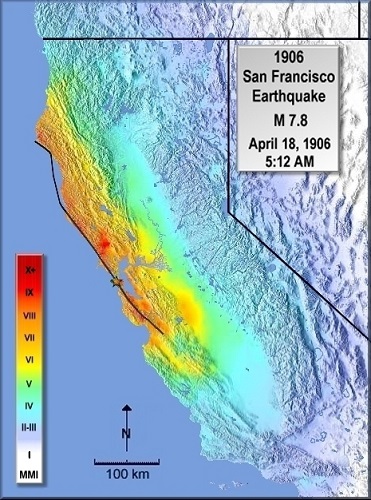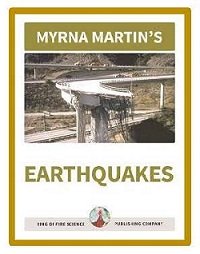Mercalli scale Measures intensity
Mercalli scale measures damage to areas
Mercalli scale can have several intensities.
Did you know there can be more than one intensity of an earthquake? The Mercalli scale is commonly used by scientists after large earthquakes to discover the destruction caused by the earthquake in areas surrounding the epicenter of the earthquake. The larger the earthquake the higher the numbers used to show intensities on a map.

Intensity map of 1906 San Francisco earthquake, USGS
History of the Mercalli Scale
The original Mercalli scale
The first intensity scale was created in 1883 by Giuseppe Mercalli. He was an Italian volcanologist that used only six categories. He revised his scale in 1902. The revised scale had 10 categories and he expanded his description of each category. It was adopted by the Italian's Department of Meteorology.
Modified Mercalli scale
Over the years new versions of this scale have been adopted. The current name used for the scale is Modified Mercalli scale and contains 12 divisions. The scale uses Roman Numerals for each division.
Observed damages caused by large earthquakes
The lower divisions of the scale deals with how the earthquake was felt by people. The higher numbers on the scale are based on observed structural damage to buildings.
1904 San Francisco historical earthquake
Seismologists can determine the extent of damage of historical earthquakes based on the criteria now used for the Modified Mercalli scale. The map above is based on people's observations and structural damage to the buildings during the 1904 San Francisco earthquake.
Intensity maps show areas of destruction
The 1904 San Francisco has an estimated 7.9 magnitude on the moment magnitude and had a maximum intensity of XI. The map shows eleven different intensities. You can tell on the map where the most destruction occurred and where the earthquake waves were not felt by people in the surrounding areas.
Gathering information for a mercalli scale map
Observations by people
People fill out reports on what happened to them during an earthquake. They are asked if they were awakened by the earthquake, if furniture moved, was there damage to chimneys or to walls in their home.
Questions reflect criteria for intensity
Each of these questions are part of the criteria used to determine the intensity of the earthquake at their location. Engineers also examine structural damage to buildings and other man made structures. They file their reports with the earthquake center.


Click for More Information and to Order
Generation of an intensity map
Creating an intensity map
The earthquake center uses the information from these observers to create an intensity map. The map has circles radiating out from the epicenter of the earthquake with Roman numerals showing the intensity of the earthquake in different areas.
Modified Mercalli scale
The modified Mercalli scale used for these maps divides the intensity of the earthquake into twelve groups. Roman numerals I to XII are used to show the effects of the earthquake.
Officials use intensity maps
City officials and insurance companies use the intensity map after an earthquake to assess the damage to a town or region. They also use these maps to determine future housing regulations in an area. Insurance companies use projections to determine earthquake insurance.
Major factors that affect the intensity of an earthquake.
- The greater the magnitude, the greater the intensity near the epicenter.
- A single earthquake can produce a range of intensities from I to XII.
- The intensity decreases as the distance from the epicenter increases until there is no effect felt by the earthquake.
- Earthquakes can have a range of intensities but only one magnitude.
KIDS FUN Science Bookstore
Check out Myrna Martin's award winning textbooks, e-books, videos and rock sets. The Kids Fun Science Bookstore covers a wide range of earth science topics. Click here to browse.










